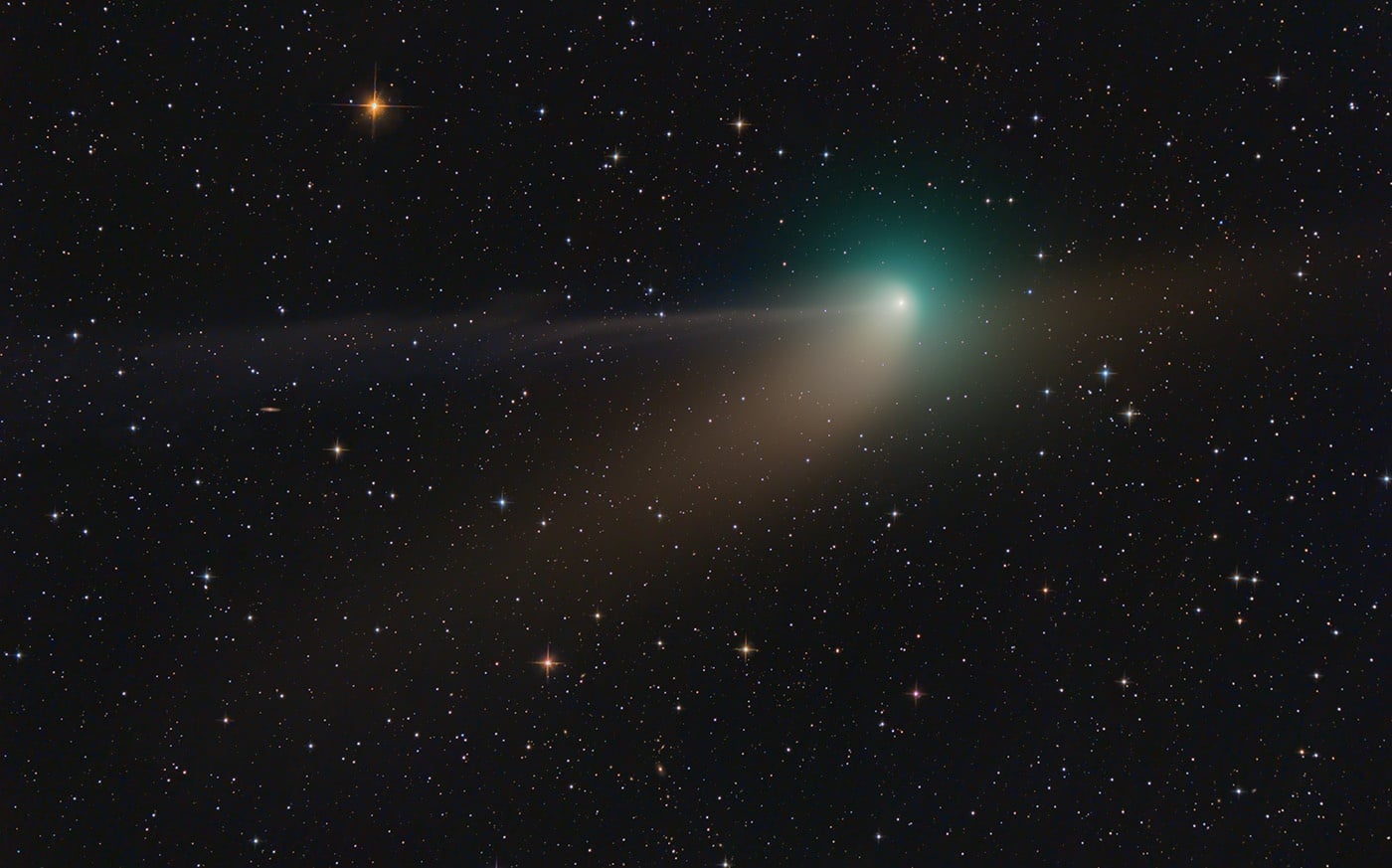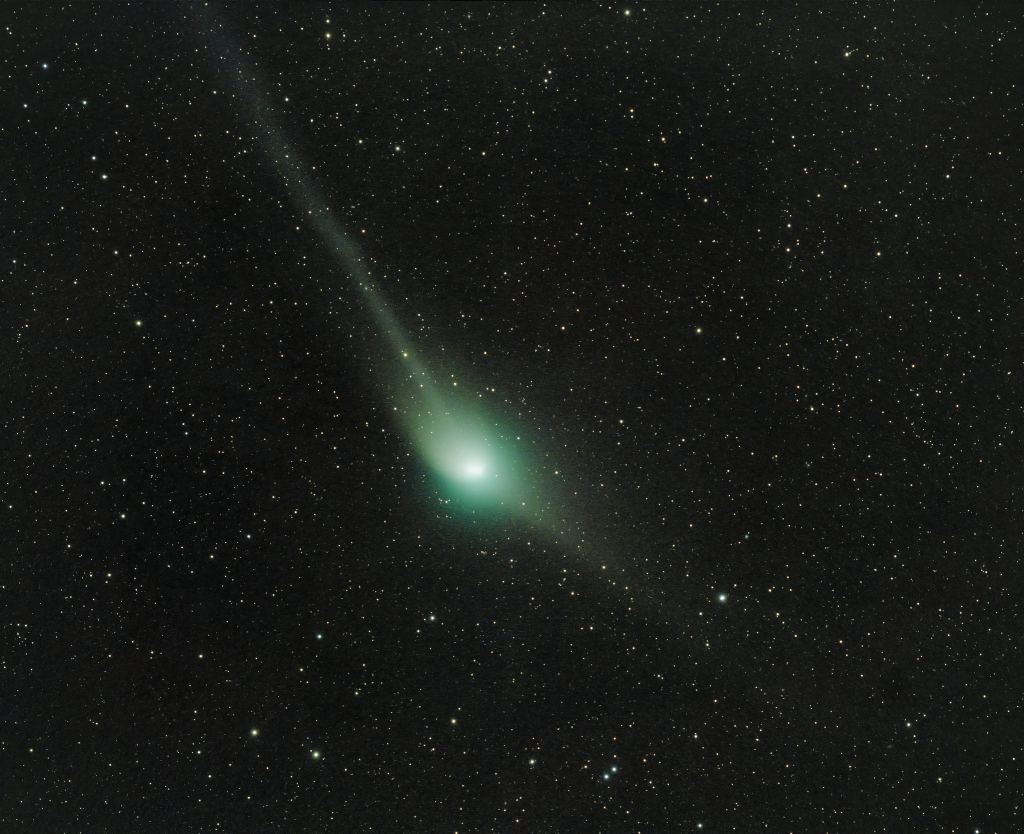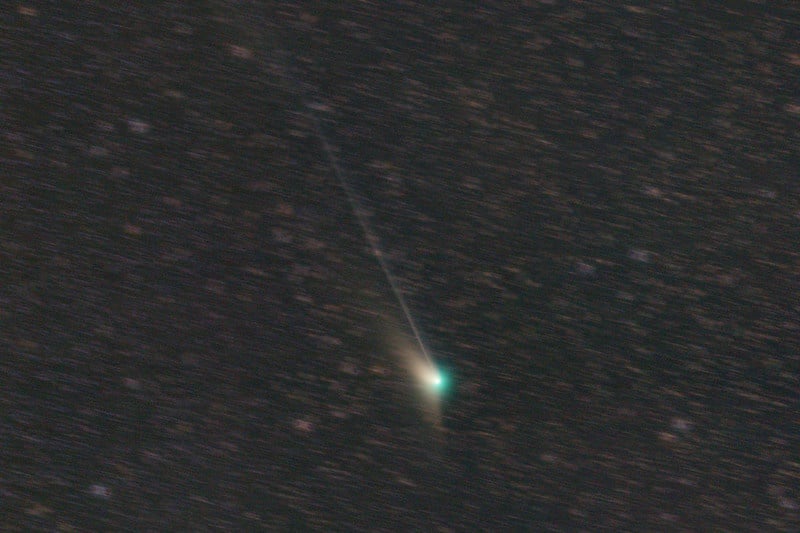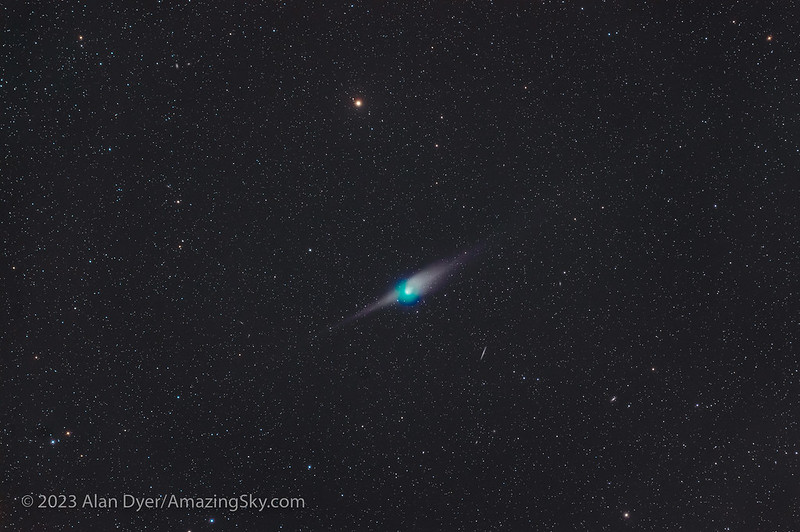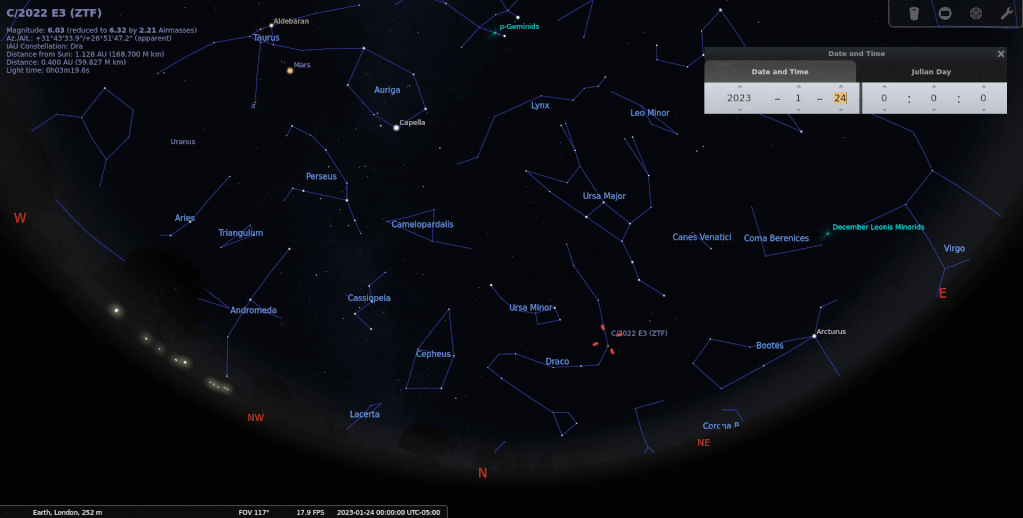A rare 'green' comet is passing through our Solar System and astrophotographers have been out capturing photos. While this comet, named C/2022 E3 (ZTF) is not yet visible yet to the naked eye, it could be when it makes its closest approach to Earth on February 1, but you'll likely need to be in a very dark site. As of now, you'll need a telescope or binoculars to see it for yourself. The images here are taken with several minutes of exposure time.
This comet has been dubbed the "Green Comet" because of its greenish hue. Professor Paul Wiegert from Western University in Canada said that comets contain carbon-bearing molecules, which break down under ultraviolet light from the Sun. This produces, among other things, dicarbon molecules which produce the eerie green glow associated with some comets.
Our lead photo comes from photographer Chris Schur from Arizona, and he points out that the comet has a rare sun-ward pointing anti-tail.
"The gas tail is the bluish white ray extending to the left," Schur explained via email. "The broad fan-like dust tail is pointing downward and is a lovely golden yellow hue. The amazing anti tail is pointing to the right and is also a beautiful golden hue as well."
Chris said he carefully processed the head region of the comet so it clearly shows the star-like nucleus of the comet surrounded by a teal-green glow from ionized carbon atoms.
We've got more photos from around the world below, gathered from Universe Today's Flickr pool and Twitter.
C/2022 E3 (ZTF) was discovered in March of 2022 by astronomers using the wide-field survey camera at the Zwicky Transient Facility at the Palomar observatory in California. Astronomers were able to trace its orbital history and determined it is flying by Earth for the first time in roughly 50,000 years and won't be seen again for thousands of years.
As skywatchers know, the brightness of comets is notoriously unpredictable, but C/2022 E3 (ZTF) should become more visible in the next few days.
Comets can also change quickly in their appearance, as these two images from Andrew McCarthy show. The first image is from January 19, and his image here is highly processed:
Loading tweet...
— View on Twitter
A few days later (and with less processing,) the comet looks dramatically different. Some changes may have occured because of a coronal mass ejection from the Sun
Loading tweet...
— View on Twitter
Loading tweet...
— View on Twitter
One of our favorite astrophotographers, Alan Dyer, never disappoints! Here's his view from Canada:
Loading tweet...
— View on Twitter
Want to try to see it for yourself? Here's an animation via Western University showing where the comet will be visible in the sky:
Loading tweet...
— View on Twitter
 Universe Today
Universe Today
